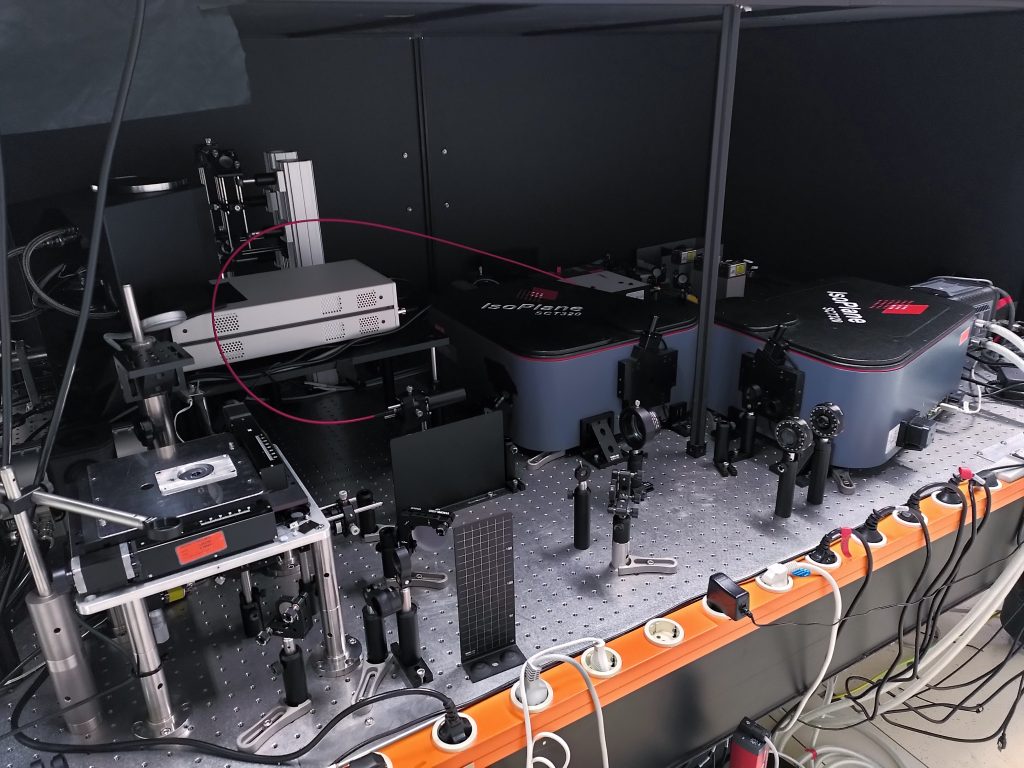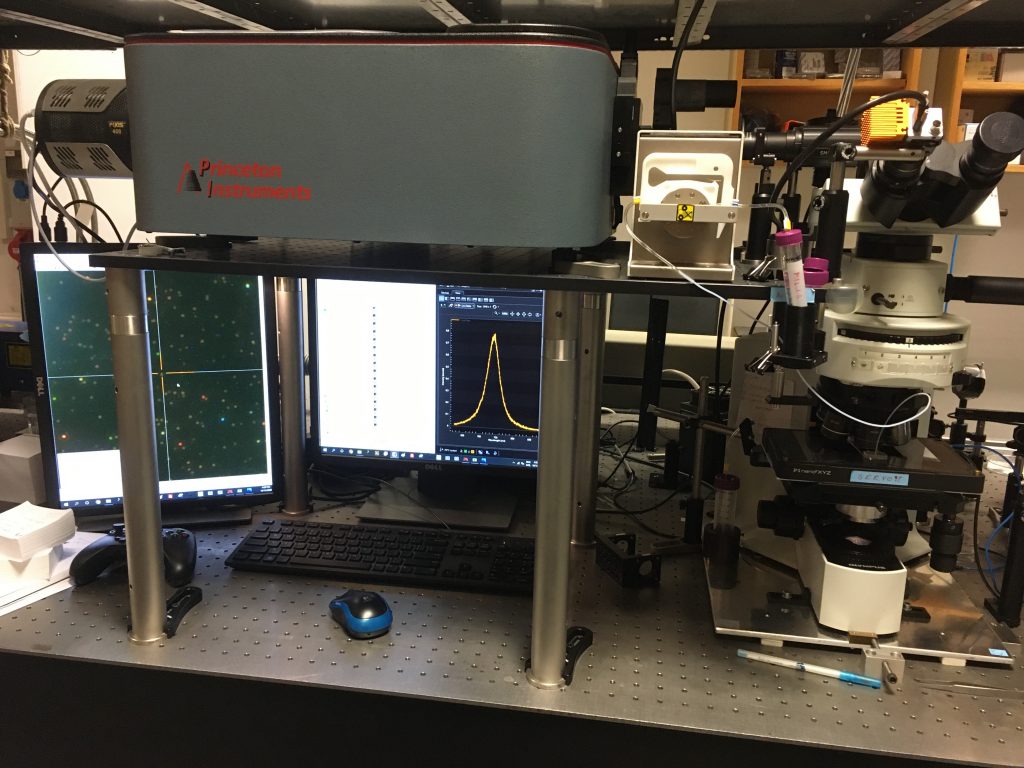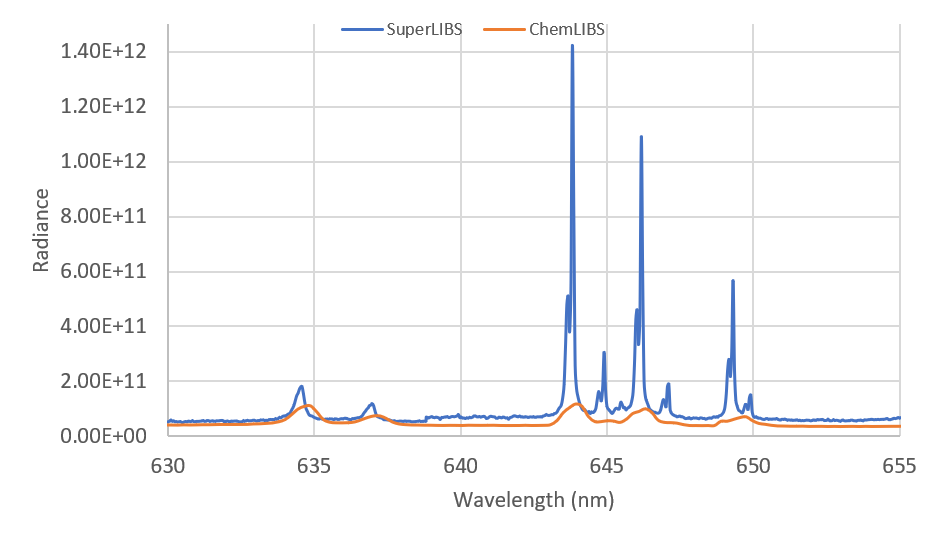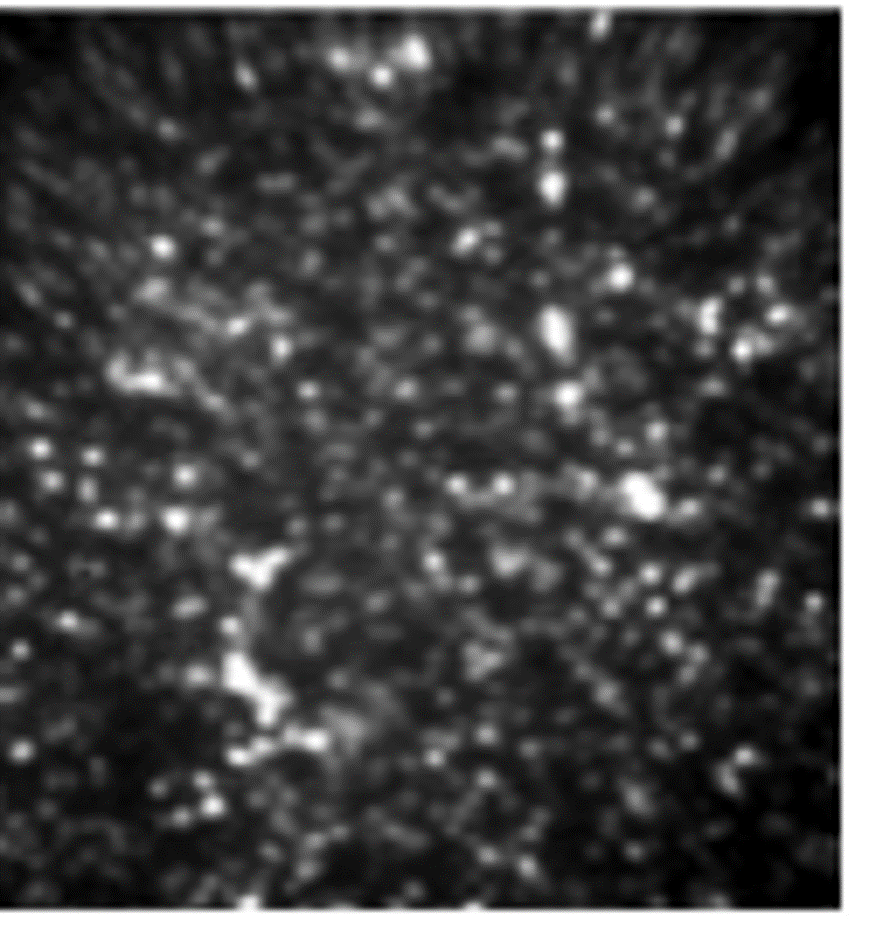Measuring Large Scale Interactions Between Surfaces with nm Precision to Better Understand Geological Formations
“The low aberrations of the IsoPlane system allow us to make very precise measurements of 2D spectral interference patterns. In combination with LightField and Intellical, this system is very efficient to setup for challenging scientific measurements, such as imaging of reactive mineral surfaces in confinement”
Dr. Joanna Dziadkowiec, Dr. Anja Røyne
University of Oslo

Control of Ultrafast Non-Linear Interactions in Materials and Plasmonic Nanostructures

“While most spectrometers would not be able to measure the weak non-linear signal levels we see in our experiment, IsoPlane and PIXIS provide the necessary sensitivity we need.”
Eyal Bahar
University of Tel Aviv
TERS Imaging Resolves Individual Molecular Vibrational Modes
“We like the high throughput and the good background reduction of the Isoplane. We can highly recommend such a system to those working in in all kinds of Raman spectroscopy such as TERS, resonance Raman, low frequency Raman, etc.”
Prof. Yousoo Kim, Dr. Rafael Jaculbia
Surface and Interface Science Laboratory
RIKEN
Japan

Real-Space and Fourier Imaging and Spectroscopy of NIR Emission from SWCNTs

“In the NIR, the emission efficiency of materials drops drastically, so it is good to have low thermal noise.”
Prof. Jana Zaumseil
Heidelberg University, Germany
Microspectroscopy for Studying the Surfaces of Individual Nanoparticles
“As the IsoPlane is aberration corrected, we can have highly reliable intensity values over the whole range of the CCD”
Dr. András Deák
Centre for Energy Research
Eötvös Loránd Research Network
Hungary

Laser Induced Breakdown Spectroscopy for Geological Characterization of Extraterrestrial Minerals

“Princeton Instruments has the most sensitive and flexible spectrometers available”
Prof. Darby Dyar
Mount Holyoke College
Massachusetts
USA
Measuring Spectra of Single Quantum Dot Nanocrystals Emitting in SWIR
“The unprecedented long integration times and low dark counts [of the NIRvana:640LN] enabled single-nanocrystal spectral experiments, which cannot be achieved with conventional InGaAs detectors for these dots.”
Dr. Han Htoon
Center for Integrated Nanotechnologies
Los Alamos National Laboratory
USA

